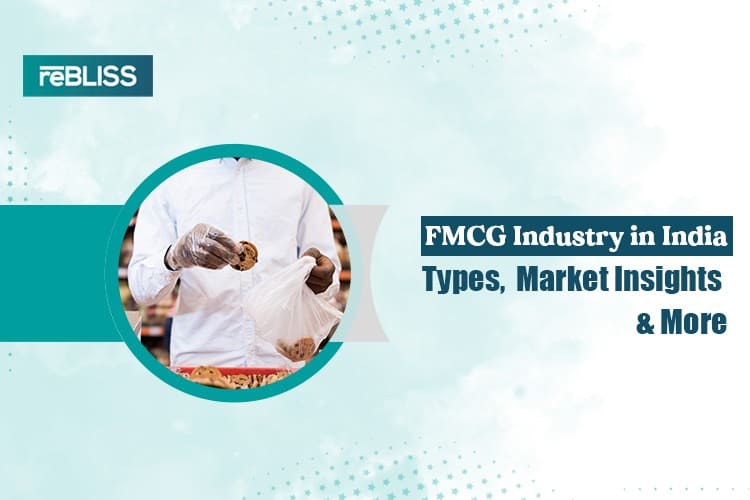FMCG Industry in India - Types, Market Insights & More
Types of FMCG Products
FMCG products are typically divided into various types. Here is the list -
Food and Beverages
Food and beverages have short shelf lives and high turnover rates and these products come under the FMCG category. Here are some examples of food and beverages that come under the FMCG industry.
Prepared foods like bread, pasta and potato chips
Beverages like coffee cups, soda cans and bottled water
Food that is ready to eat, such as nut packets or crisps
Personal Care
Personal care products include toothpaste, shop, and serum. These products also come under the FMCG category because consumers use them regularly, often purchase them at low prices, and they are not long-lasting. Some other examples of personal care products are - cosmetics, deodorants, bath soap, lotions, hair dye, lipsticks, dental care items, etc.
Healthcare Products
Healthcare products come under the FMCG category because they are widely dispersed. The items involved are syringes, bandages, plasters, etc.
Home Care Items
Household products fall under this category because they are widely distributed and sold at typically low unit prices. These include cleaning supplies, kitchen towels, toilet paper and more.
Market Share of FMCG in India
From 2021 to 2027, the revenue of the FMCG market would rise at a CAGR of 27.9%, reaching nearly US$ 615.87 billion.
The market size of processed food items in India reached US$ 307.2 billion in 2022 and will likely grow to US$ 547.3 billion by 2028, showing a growth rate of US$ 547.3 billion by 2028. In 2023, digital advertising will likely have risen to US$ 9.92 billion with the contribution of 42% share by the FMCG industry.
If entrepreneurs are interested in food processing products, they can open them in government-designated agro-processing clusters, which reduces the costs that come with plant setup. Due to the advancement of e-commerce and online retail, FMCG businesses sell their products across the country without investing much in marketing activities.
Through the Union Budget 2023-24, the government earmarked PLI schemes worth US$ 976 million for all industries. The amount announced is aimed at reducing import costs, increasing domestic capacity, promoting exports and improving the cost competitiveness of domestically produced goods. The budget focused on fulfilling rural demand by increasing disposable income and allocation to farms besides raising fund allocations on rural infrastructure, connectivity and mobility to create long-term jobs.
Reasons Behind India’s Booming FMCG Industry
The Rise of E-commerce
Both urban and rural areas of India were affected by the technological revolution. Due to the availability of e-commerce in the overall country, there has been a discernible shift in demand. This makes customers buy their desirable products easily using apps and websites.
Helping Hands of Technology
The FMCG business depends on flexibility, and the latest technology can help ensure the same. That's why, FMCG companies incorporate technologies to improve operational effectiveness, get new opportunities, and manage complex supply chain requirements.
More Reasons
In the upcoming years, India's rural market is expected to grow to US$ 220 billion. Utilisation has increased with rising incomes raising the average person's aspirations.
Conclusion
This is all about the FMCG industry, its type, market insight and the reason behind its growth. In the next few years, FMCG companies will likely grow due to digitalisation shaping every aspect of their business. If you are running an FMCG business and want a credible workforce, sign up on reBLISS - a platform that enables businesses to find credible professionals across categories such as FMCG.




Comments
Post a Comment